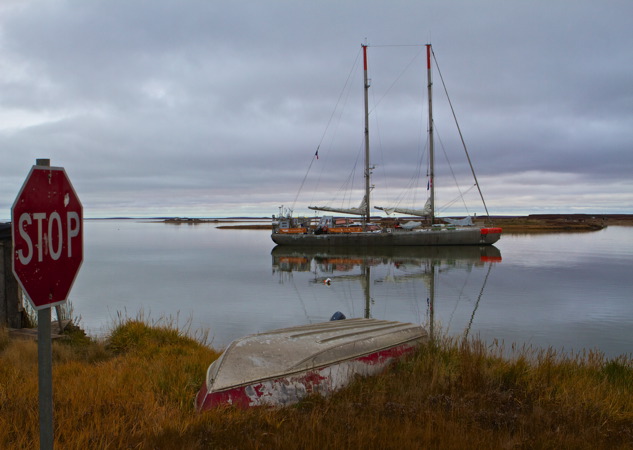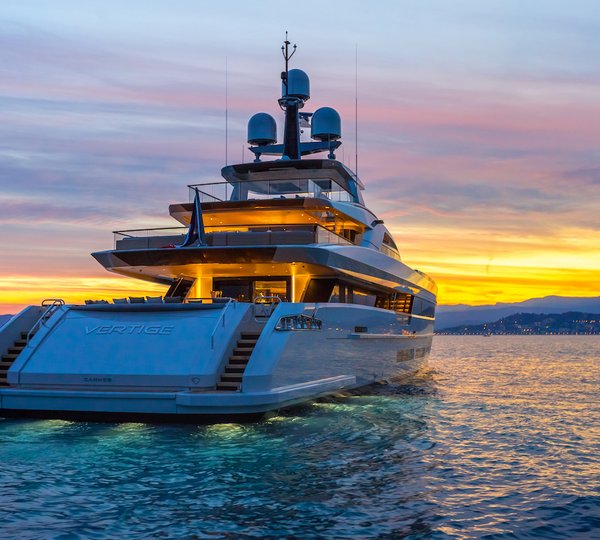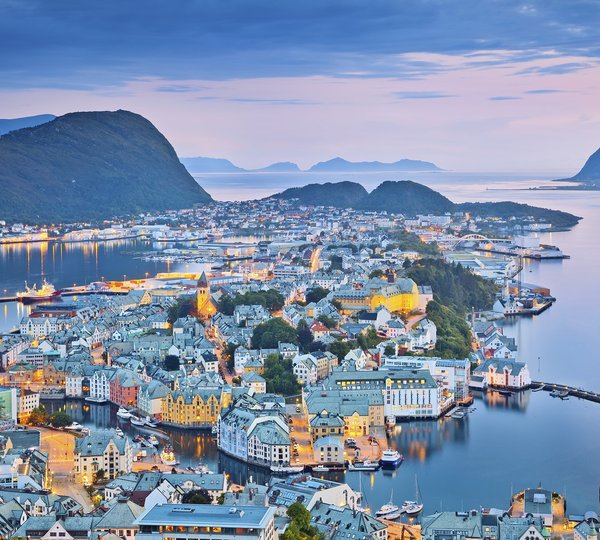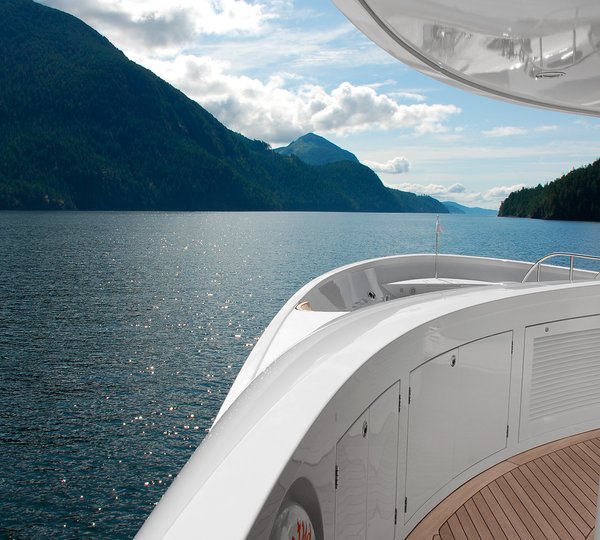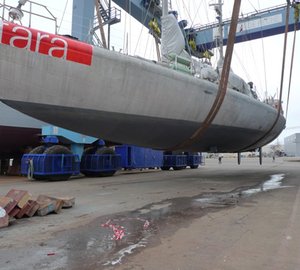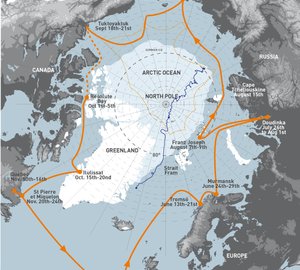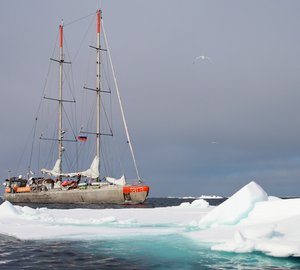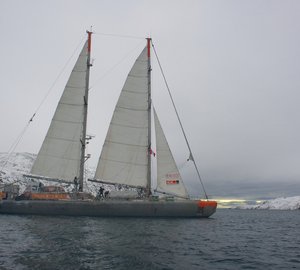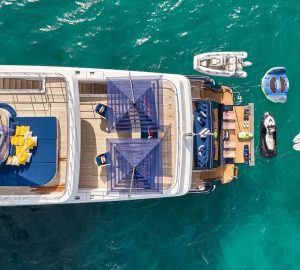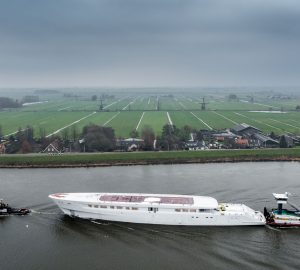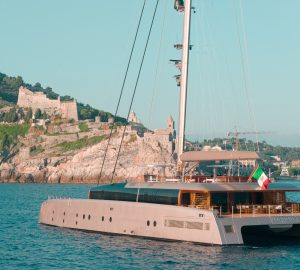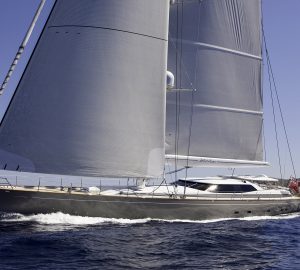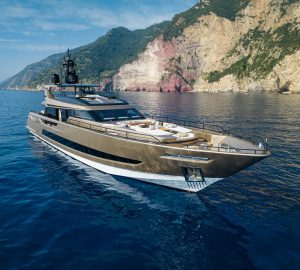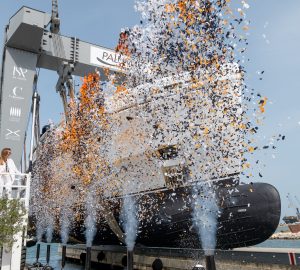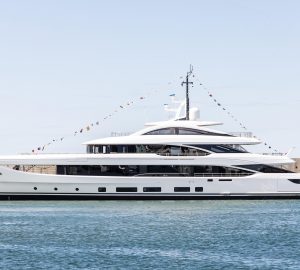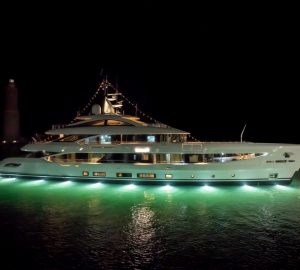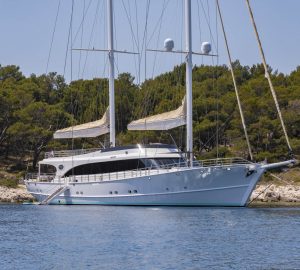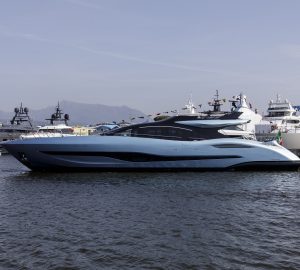Expedition yacht Tara is presently circumnavigating the Arctic Ocean on a scientific research expedition. At the end of last month, Tara yacht crossed the Northeast Passage and is now about to go through the Northwest Passage. Following three months spent in the region, this is a chance for Tara Expeditions to transmit a strong message about the Arctic.
What is the purpose of Tara Oceans Polar Circle Expedition?
Sailing yacht Tara is a “polar” schooner and Tara Expeditions has rare expertise in this region. But beyond a passion for adventure and the Arctic, Tara Oceans Polar Circle is a scientific expedition which will complete the sampling of marine ecosystems carried out between 2009 and 2012 during the Tara Oceans expedition.
Tara research in the Arctic, which is important to carry out now, will also help to understand the specific adaptation of this ecosystem, essential in a rapidly changing region, which is considered an “exotic” tourist paradise, a necessary cargo route, and a new Eldorado for oil.
Tara yacht is not only sailing for the sake of scientific knowledge, but is also motivated by the passion of those who want to change how the Arctic is viewed.
The more it melts, the faster things happen…
The Arctic is one of the last great natural areas of the world, a unique and fragile ecosystem harboring rich and unknown biodiversity. With industrial development, economic growth and pressure of human activities, climate change is altering the region at breakneck speed. Among these changes, there is the rapid melting of summer ice, acidification of the Arctic Ocean, thawing permafrost in Siberia, and threats to endemic species such as Siberian polar bears. These phenomena affect not only the lives of 5 million people living in the Arctic Circle, but also the whole world, and require a comprehensive and urgent response. We can move forward in several ways by balancing preservation, innovation and development.
Despite the progress of science and polar navigation, the logistics costs for research in the far North remain very high. The research effort is therefore extremely limited compared to the appetite of the actors involved in exploiting reserves of oil and gas in the region.
Biological resources are still largely unexplored
It is vital to remember the importance of Arctic biodiversity in the global carbon pump, and the great need for research to provide a maximum of data for future decisions. Beyond the mirage of a new oil Eldorado, the Arctic ecosystem is unknown, and may contain new biological resources to meet the challenges of a world undergoing profound change.
The biodiversity of polar plankton could help in producing energy and finding applications in medicine and industry. Diatoms (plankton) for example, produce their glass (silica) skeletons in very cold waters, but we are unable to do the same without high energy-consuming furnaces.
The Tara Oceans Polar Circle expedition is part of the international research effort to better understand the region and use its resources in a sustainable manner. The project brings together civilians and scientists from several countries, who believe in a shared and rational management of these resources.
During the course of this journey, Tara Oceans Polar Circle will have crossed 12 of the 13 Arctic regions of high ecological and biological significance defined by criteria established by the UN. The plankton data will complete ongoing studies to define areas of rich biodiversity, using plankton as an indicator of overall health of the oceans.
The Arctic’s hidden costs
Analysis of the hidden costs of climate change in the Arctic shows that no investment will be sustainable if it doesn’t take into account environmental factors. Thawing permafrost in Siberia, for example, can release so much methane that the “cost” of this is estimated at 60 trillion USD (1). This huge reservoir of methane can have unpredictable consequences for global climate. This gas contributes to the greenhouse effect and is 22 times more potent than C02.
Research by French institutions on the issue of ocean acidification (2) shows that the Arctic, where cold waters absorb more CO2 than tropical and temperate regions, is particularly affected by the phenomenon.
This year, the Arctic ice chart indicates that the ice melt will not be as extensive as the record melt observed during the summer of 2012. This is certainly “good” news, but does not, in any way, detract from the warming trend observed since 1981. New scientific predictions are expected at the end of September, when the IPCC (3) publishes the first part of a new report.
Establishing policies for sustainable management of mineral and biological resources in the Arctic is a challenge to preserve the region. Compared to the Antarctic, the Arctic does not have international status managed within the UN. Created with the aim to protect its own interests in the region, the Arctic Council (4) – formed by 8 bordering states – is slowly advancing the issues of sustainable management and conservation, and opposes demands for totally protected sanctuaries proposed by environmental organizations. So there is need for cooperation to achieve a rational management of resources through negotiated agreements, and the establishment of protected areas (Marine Protected Areas) to safeguard a minimum of zones seen as especially sensitive in terms of biological and ecological perspectives.
Tara Expeditions calls leaders and civil society for action in different areas, such as respecting the rules of environmental protection in the context of the exploitation of natural resources; facilitated access to research programs in the Arctic; establishing new international standards for shipping in the Arctic; setting up regulations for Arctic fisheries (currently expanding rapidly); stricter regulation of tourism in the Arctic; the establishment of a Marine Protected Areas network for ecologically important regions; expanding the Arctic Council.
How long will it take for these measures to arrive at the negotiation table? The only certainty is that, given the rapid changes taking place, environmental urgency must go hand in hand with economic pressure.
(1) Nature – Gail Whiteman, Erasmus University, Netherlands, and Chris Hope and Peter Wadhams, University of Cambridge
(2) Laboratory of Climate and Environmental Sciences (LSCE / IPSL: CEA – CNRS), Laboratory of Oceanography and Climate: experiments and numerical analyses (LOCEAN / IPSL: CNRS – IRD – MNHN – University of Paris VI)
(3) Intergovernmental Panel on Climate Change, UNFCCC
(4) The Arctic Council was created in 1996 and has 8 permanent members: the United States, Canada, Russia, Denmark, Norway, Iceland, Finland and Sweden.

